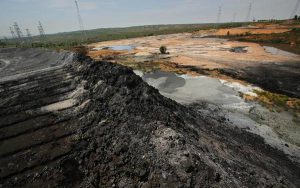Retiring the world’s coal plants quickly is the only way we can deal with the multiple scourges of coal – the millions of deaths caused globally from air pollution, the thousands killed in mining accidents each year, the devastating local environmental impacts from both mining and combustion and the staggering amounts of carbon pollution that makes the major contribution to climate change.
As world leaders prepare to attend the UN Secretary General’s climate summit in New York on Tuesday, realistic plans to address the biggest contributors to manmade climate change are urgently needed. The case for abandoning coal, particularly the least efficient power stations using the most polluting coal, is overwhelming.
Such a strategy would need to be done in the most cost-effective way possible, over a realistic time period accounting for atmospheric carbon constraints, and also be politically feasible. In addition to pricing emissions and investing in alternatives, this strategy would have to involve compensating owners of coal assets for prematurely closing their power stations. This is both reasonable and necessary if enough coal is to be decommissioned in time to keep temperature increases below two degrees Celsius above preindustrial levels – the international target agreed at Copenhagen in 2009.
How could this be done cost-effectively? Countries, together or separately, could create Coal Closure Funds (CCFs). These would be set up with taxpayer funds, through a levy on energy bills, and/or contributions from donors, philanthropists and individuals, and would pay owners of coal-fired power stations to permanently retire their assets. The assets would then be made inoperable, opposed to simply being “mothballed”, when they could then be reactivated at some future date.
CCFs would operate by organising a series of reverse auctions. Owners of coal-fired power stations would bid to receive a fixed price for each unit of generation capacity retired. The lowest bids would win the auction.
Auctions could be run annually and could cover power stations in one country, regionally or globally, depending on the geographical scope of a CCF. Auctions could also be run for specific types of coal-fired power station or those within a certain age range. Similar reverse auctions have been successfully used to reduce the number of fishing vessels and fishing permits in overfished areas, or to buy back abstraction licences in areas suffering from water stress.
CCFs could also operate a “degression” to incentivise coal owners to accept compensation sooner rather than later. For example, each auction could have a price cap, which would fall by a certain percentage each year. CCFs could also offer more in total funds in early auctions and reduce the compensation kitty for later auctions. That way, owners might be more likely to secure a better price the earlier they bid, encouraging early action.
An affordable solution?
In the US and EU, where many coal-fired power stations are more than 30 years old, the additional cost of inducing early closure could be relatively small. Many investors, moreover, might jump at the chance of reducing their exposure to the regulatory and reputational risks associated with coal. As a result, small CCFs could quickly close a large number of coal-fired power stations.
In other countries, particularly China and India, where large fleets of coal-fired power stations are newer, the funds required would have to be commensurately larger. Here CCFs could concentrate on the oldest and most polluting power stations first. In addition, donor governments helping to pay for CCFs in developing countries, as well as early US and EU closures, could be part of a grand bargain to secure international climate action.
At the Stranded Assets Programme at the University of Oxford’s Smith School, we conservatively estimate the compensation bill for prematurely closing all existing sub-critical coal-fired power stations – the least efficient plants – by 2025 at US$47 billion in the US and US$106 billion in India. The real totals would be significantly lower as we have assumed that compensation for all projected future discounted cash flows would occur, though this would never be the case in practice. However, these numbers exclude any of the costs associated with replacing the lost generation capacity in each country or support measures for the communities affected.
While more analysis is needed, my sense is that a CCF operating in India at a scale of US$500 million to US$1 billion per year, and concentrating on the oldest and most polluting coal-fired power stations, would significantly improve the efficiency of India’s coal fleet and make a meaningful dent in India’s projected growth in greenhouse-gas emissions. Given the benefits, this is an order of magnitude of funding that is eminently achievable from donor governments, the Indian government and philanthropists.
In addition to CCFs, premature closures would need to be accompanied by support for individuals and communities negatively affected, for example by job losses. Lost generation capacity would also need to be replaced by cleaner alternatives and the rate of replacement would likely be the biggest constraint on the pace of any closure plan. These are challenges and would obviously need to be considered and funded as part of any broader coal-closure strategy.
In the absence of meaningful carbon pricing or robust regulation and in light of ever-increasing urgency, we desperately need a realpolitik strategy to retire coal-fired power stations. The first CCFs could be created in time for the next big climate negotiations in Paris in 2015 and then scaled up as experience of their operation grows. There are few things that would achieve significant emission reductions as quickly. Their creation would also help to send a loud and clear signal to the coal industry – your time is up, get out while you can!








